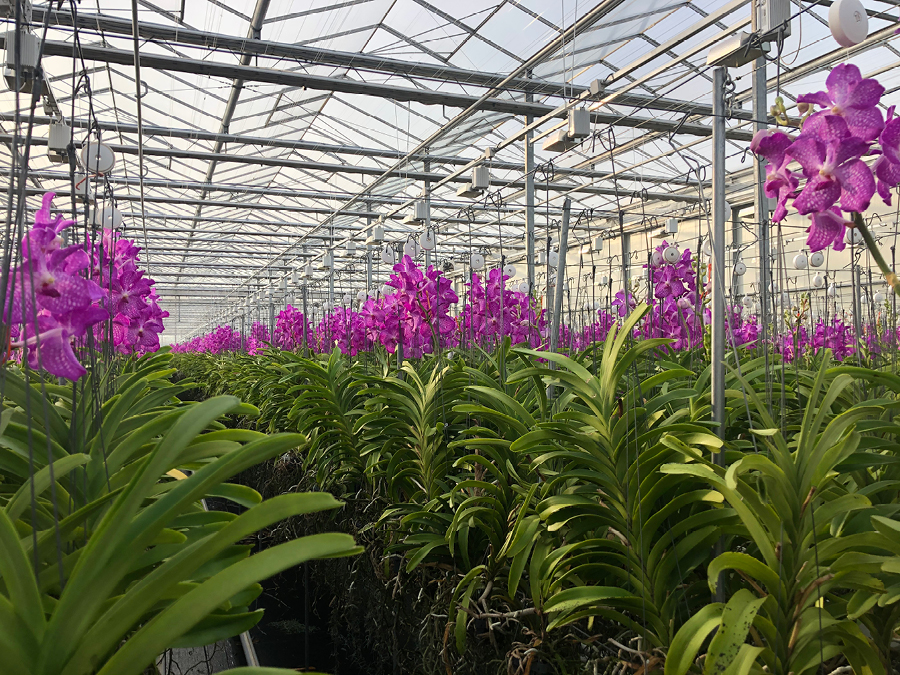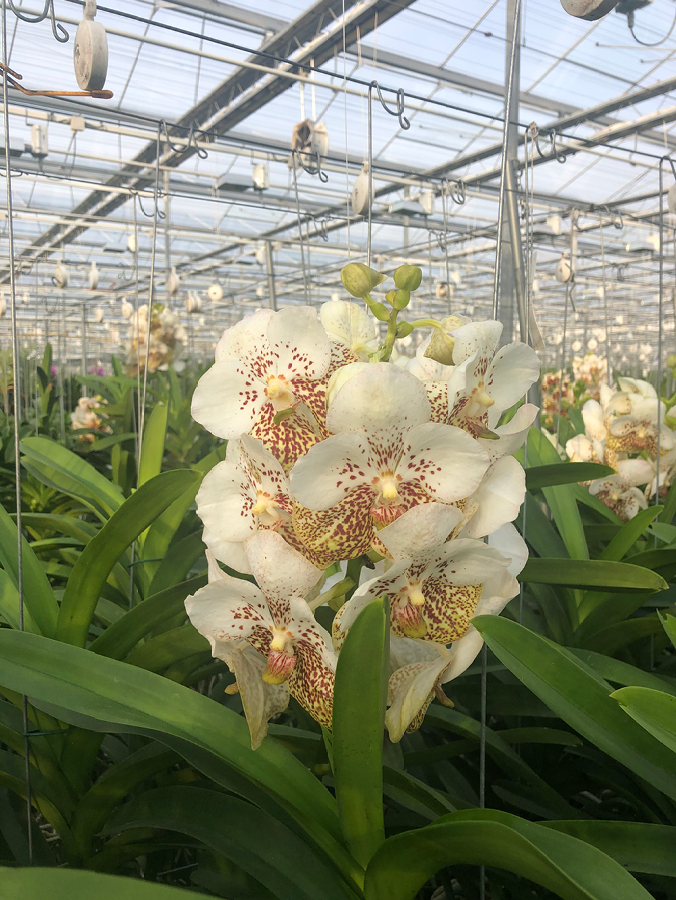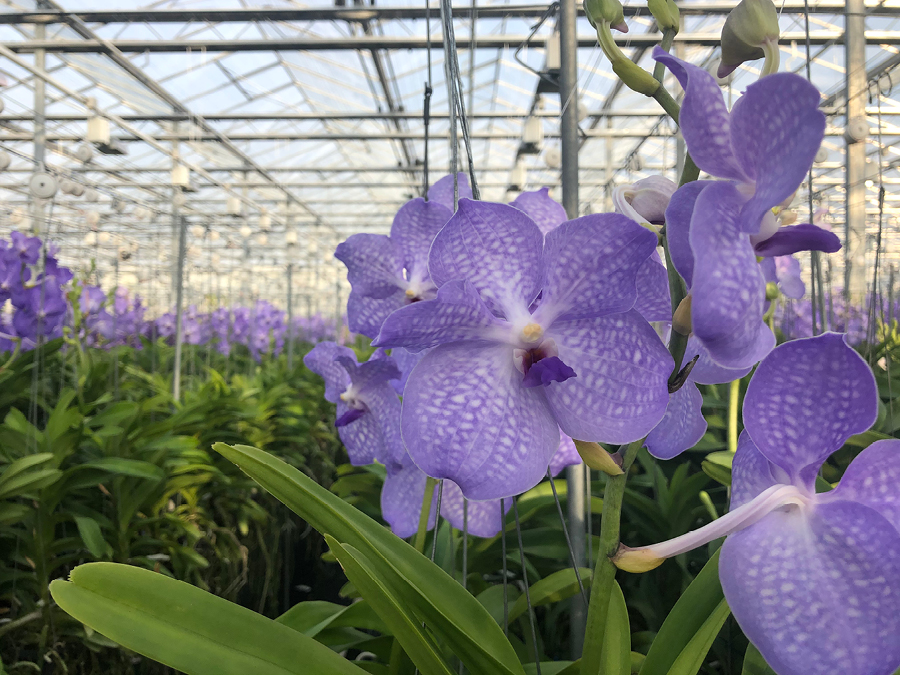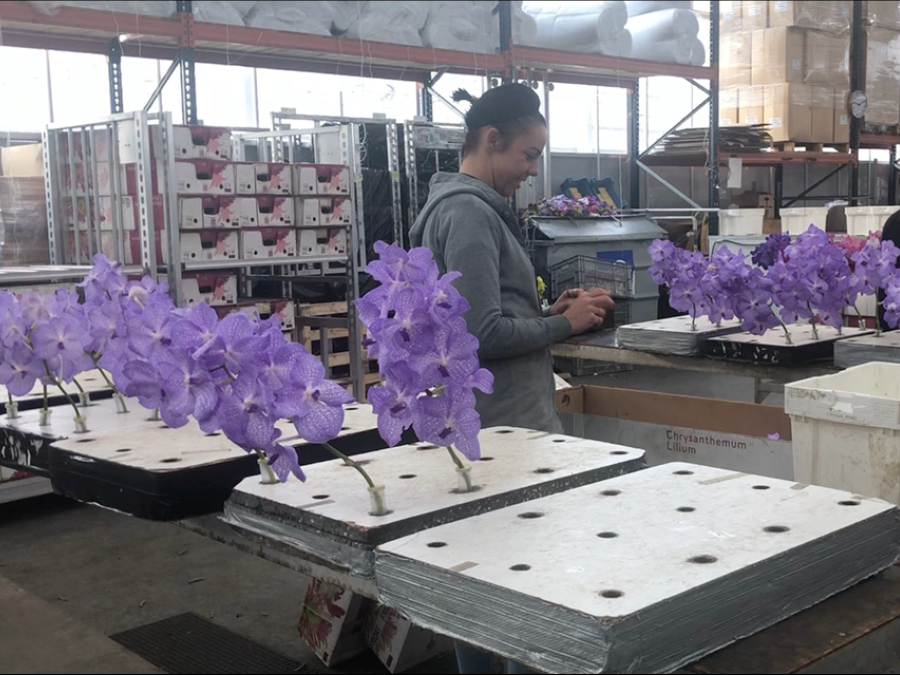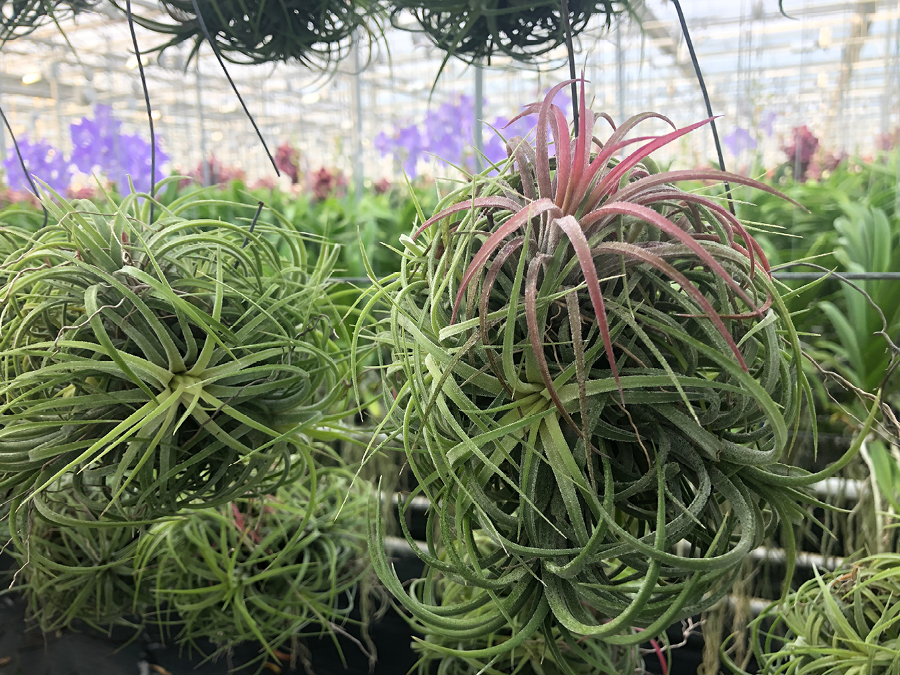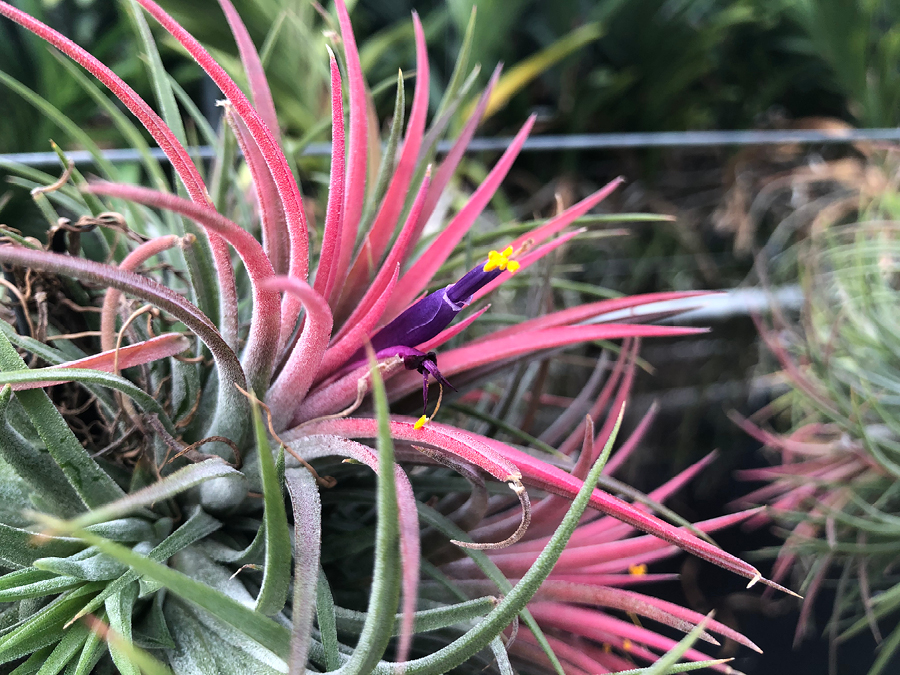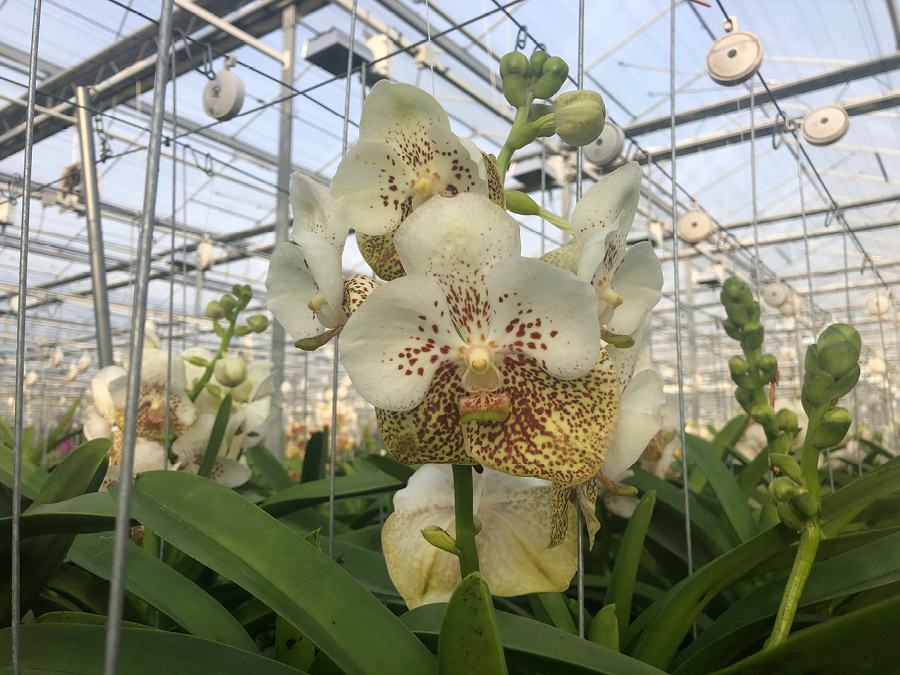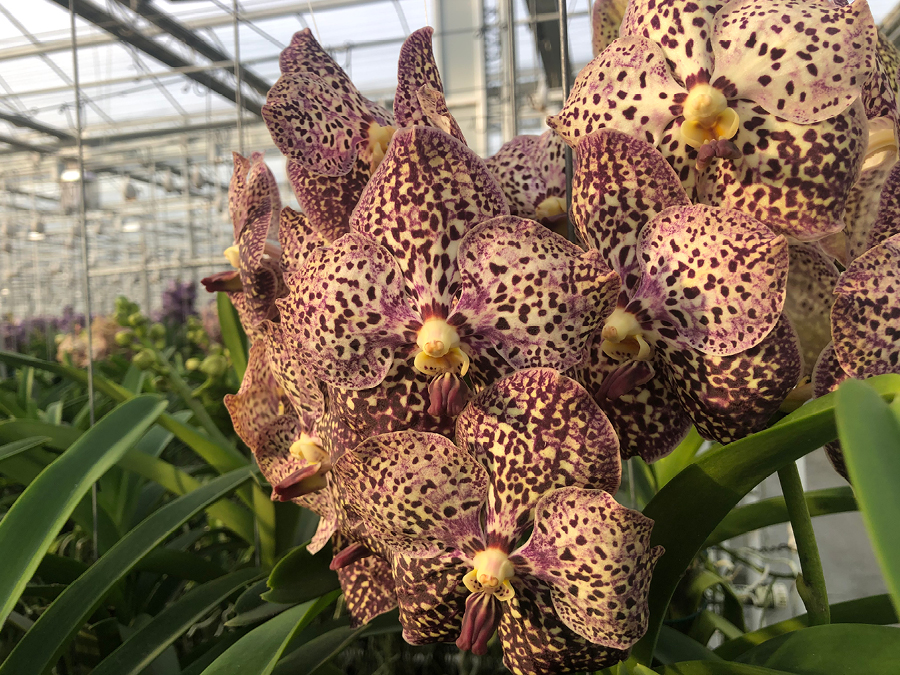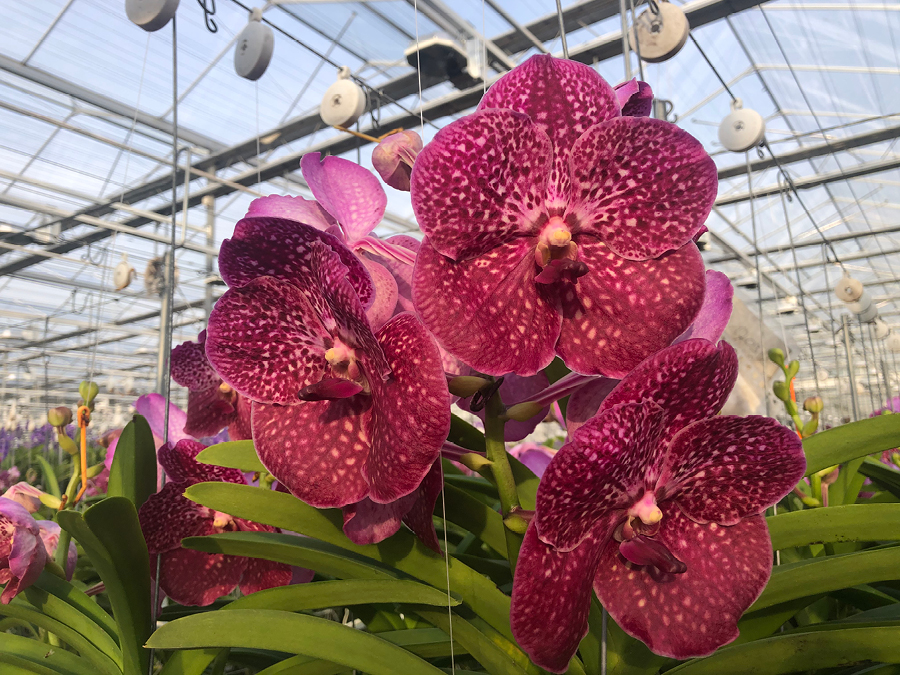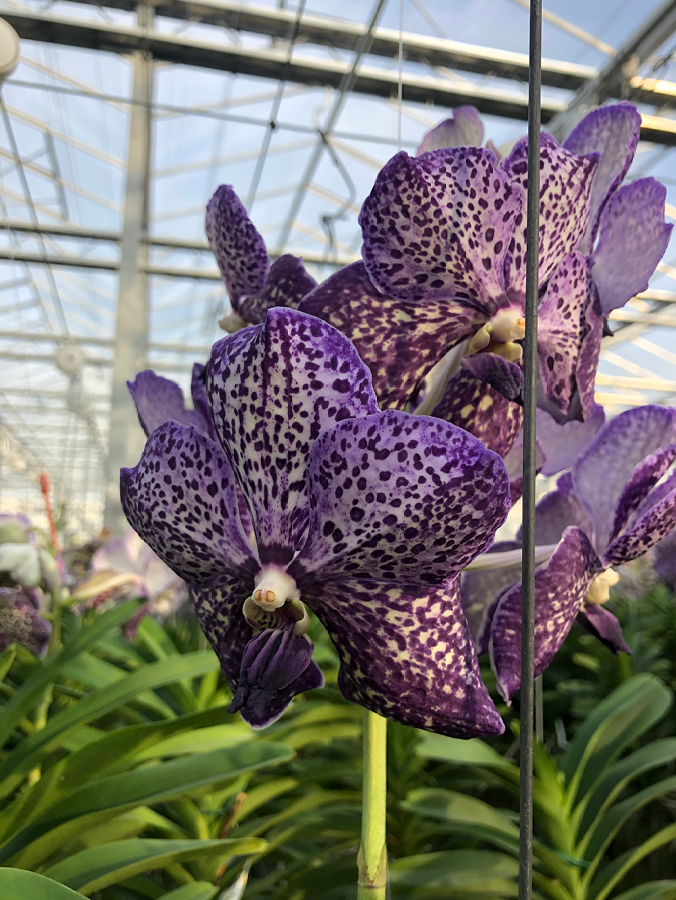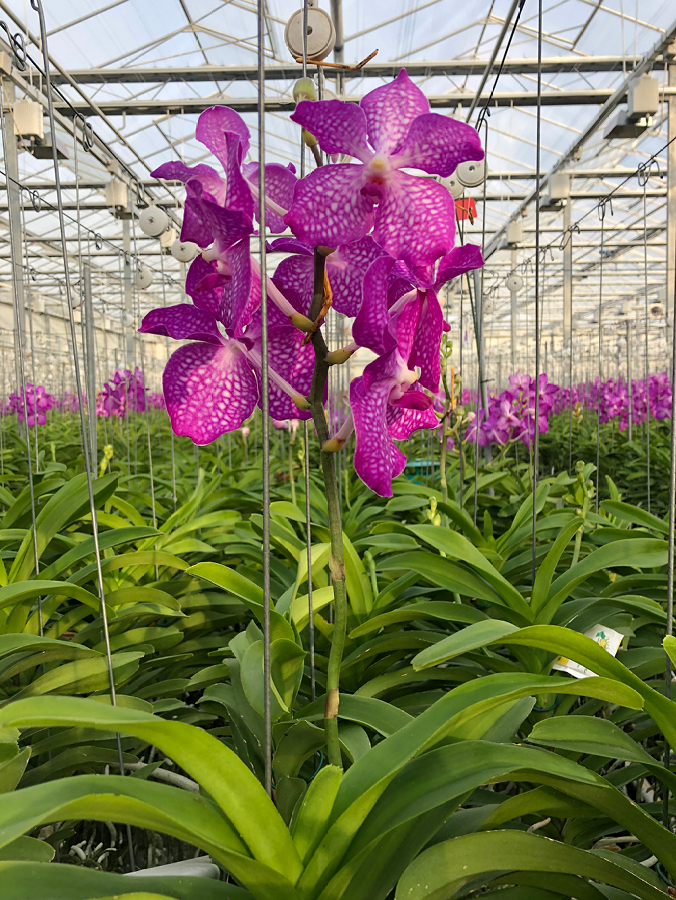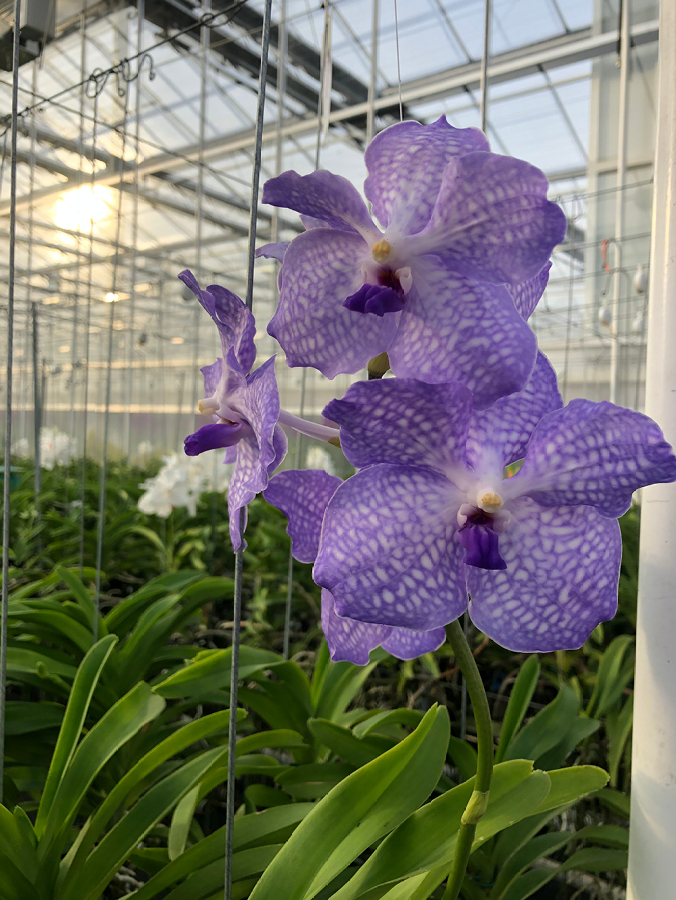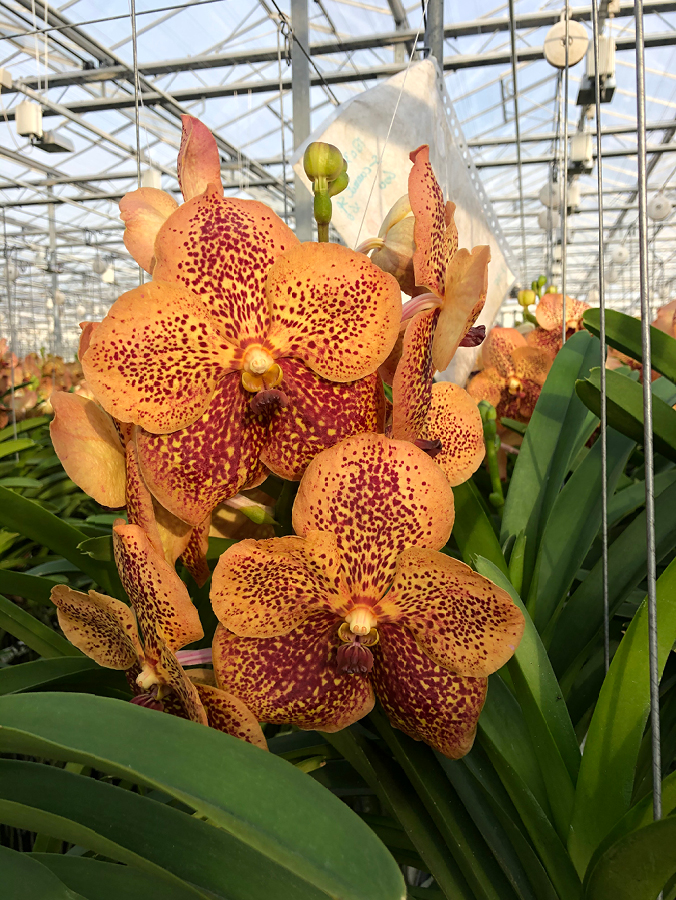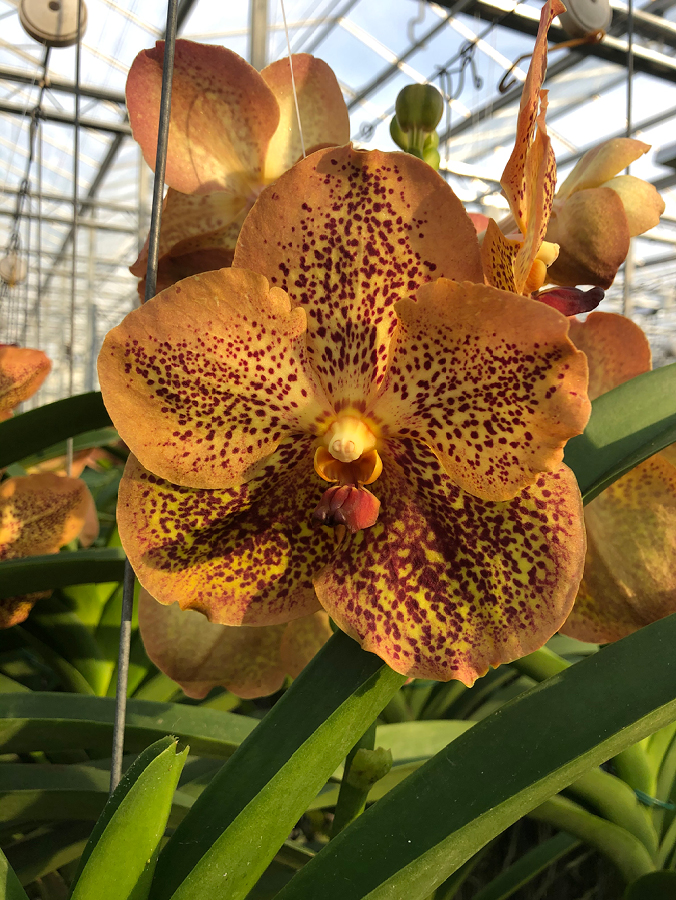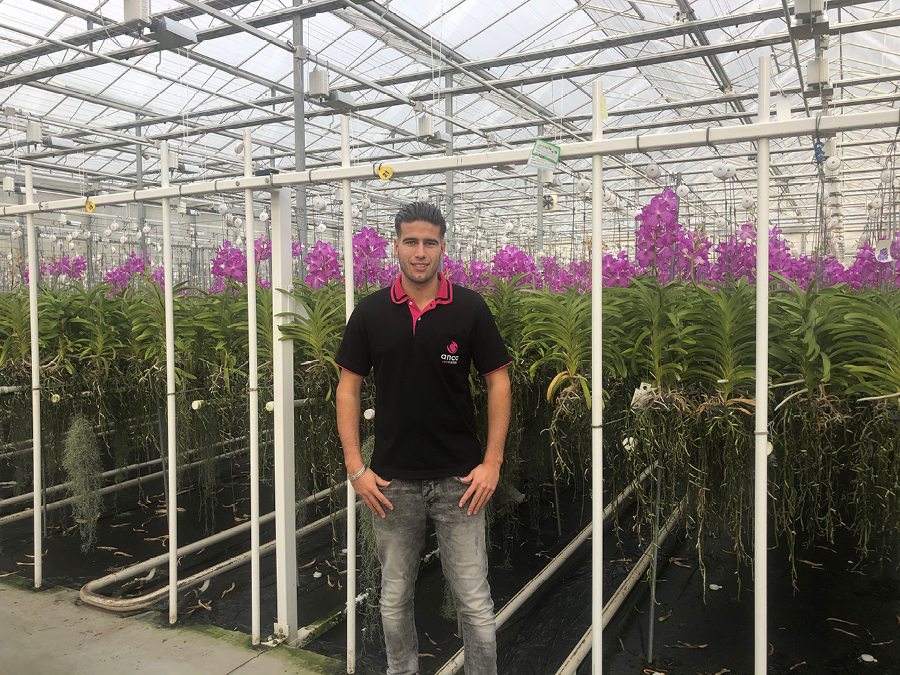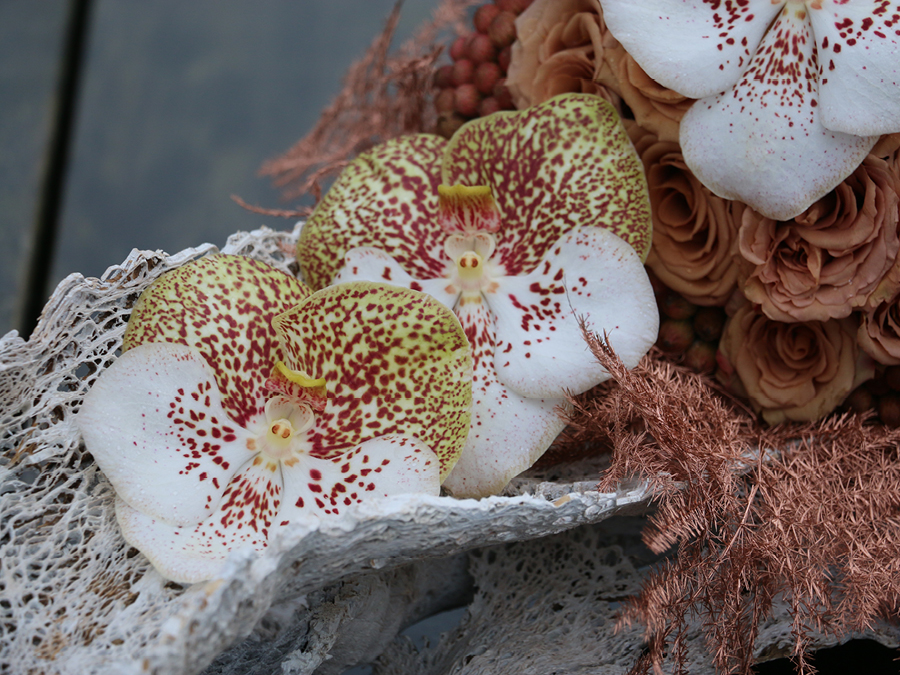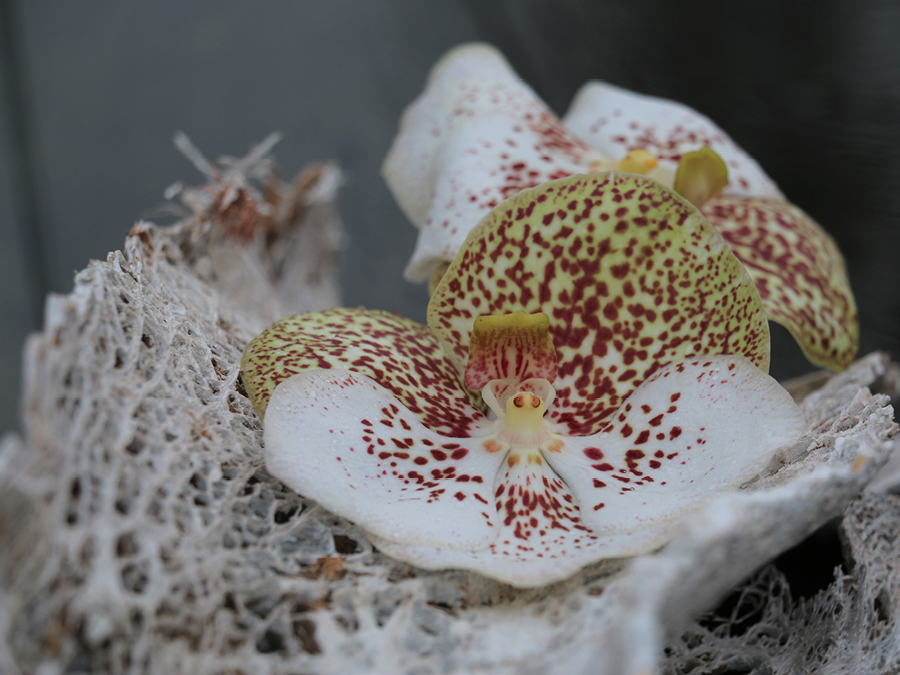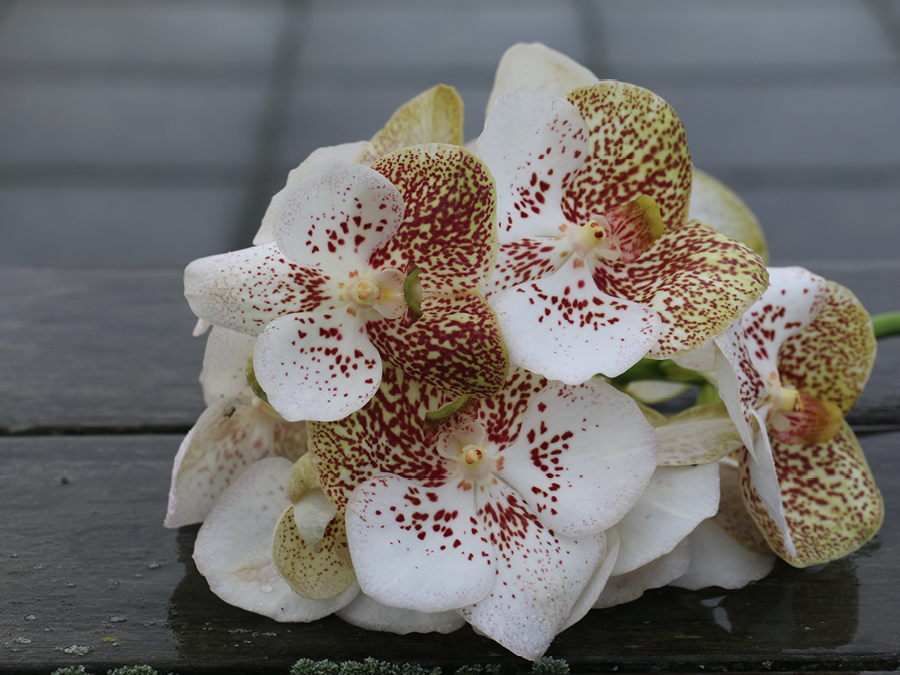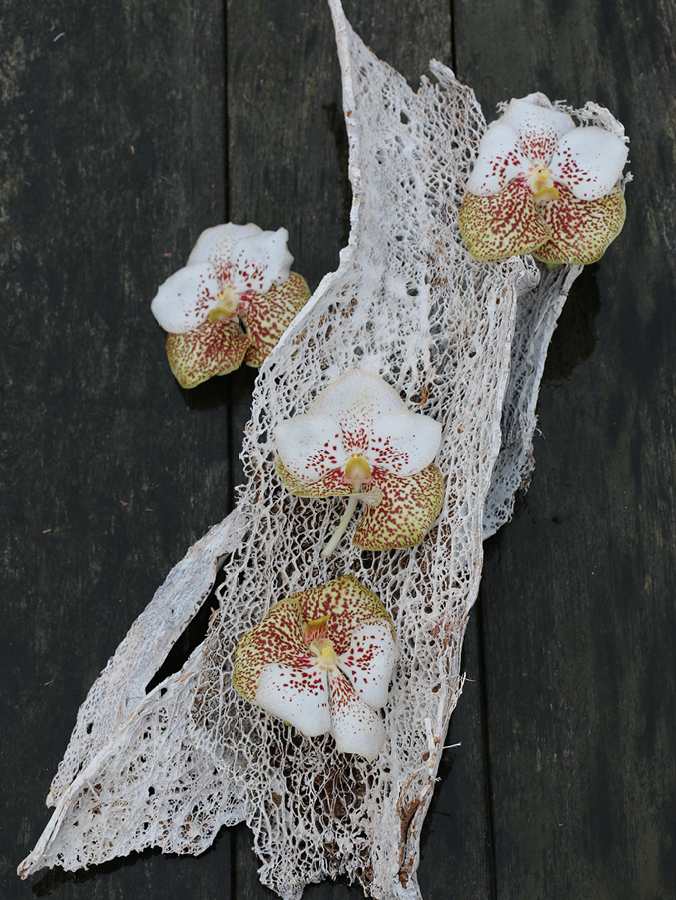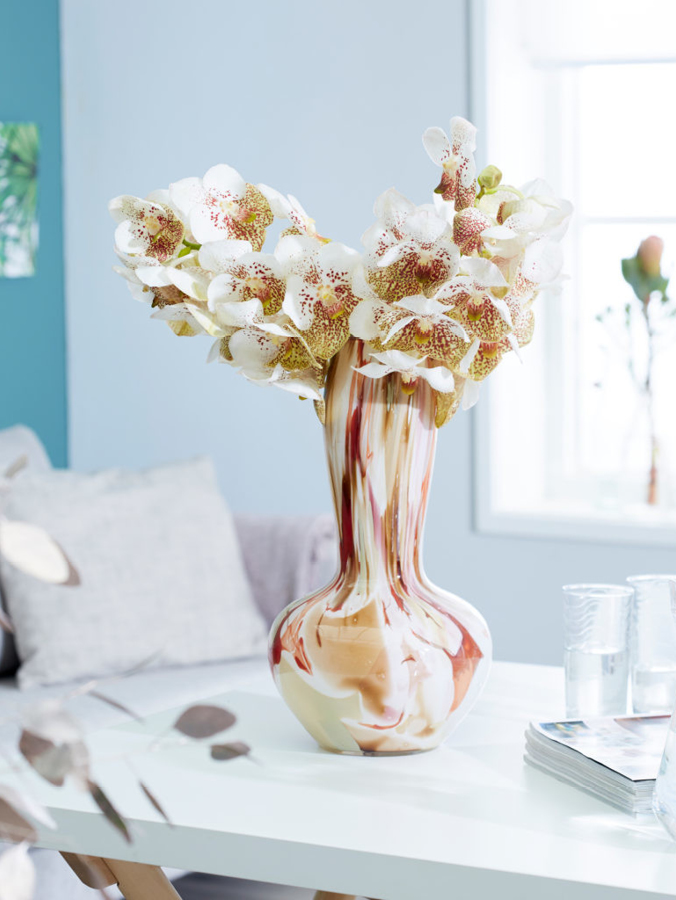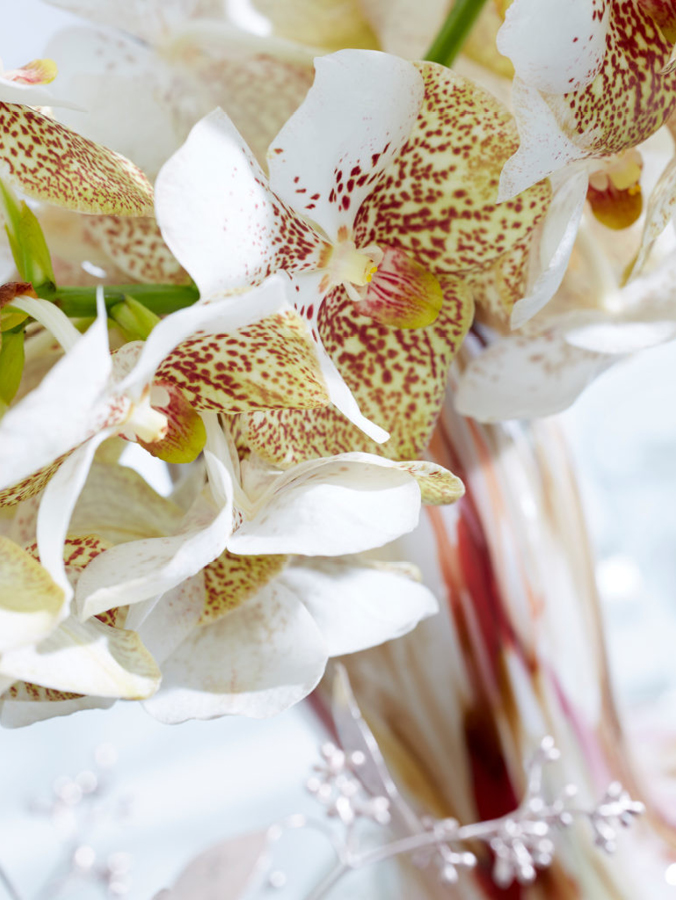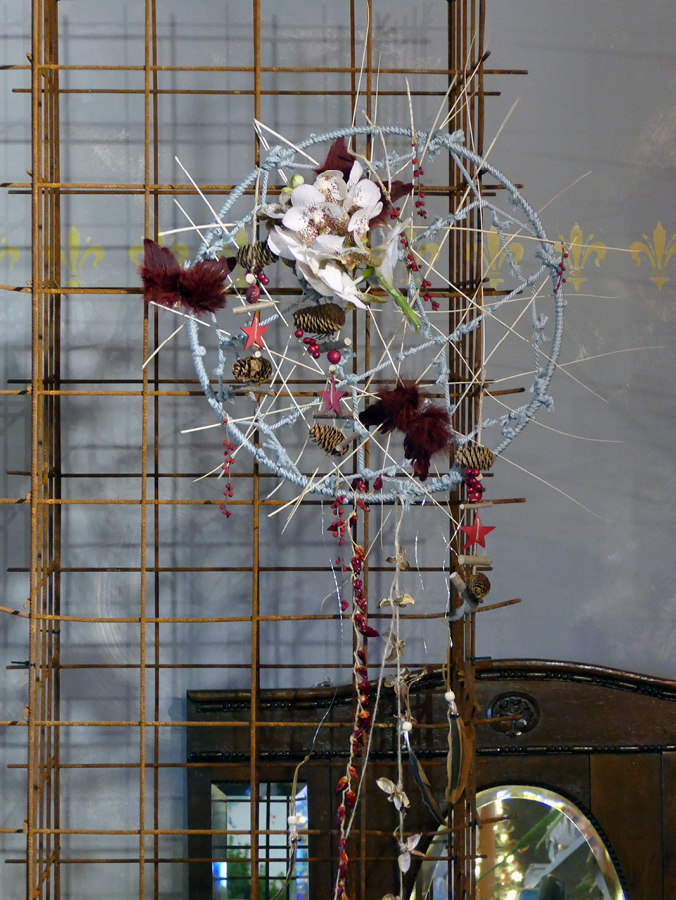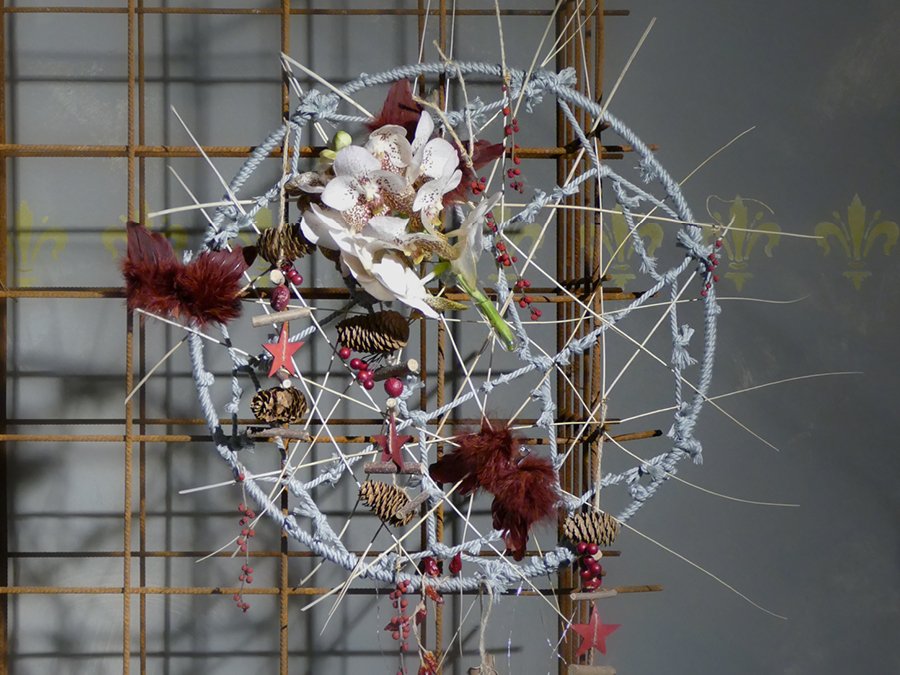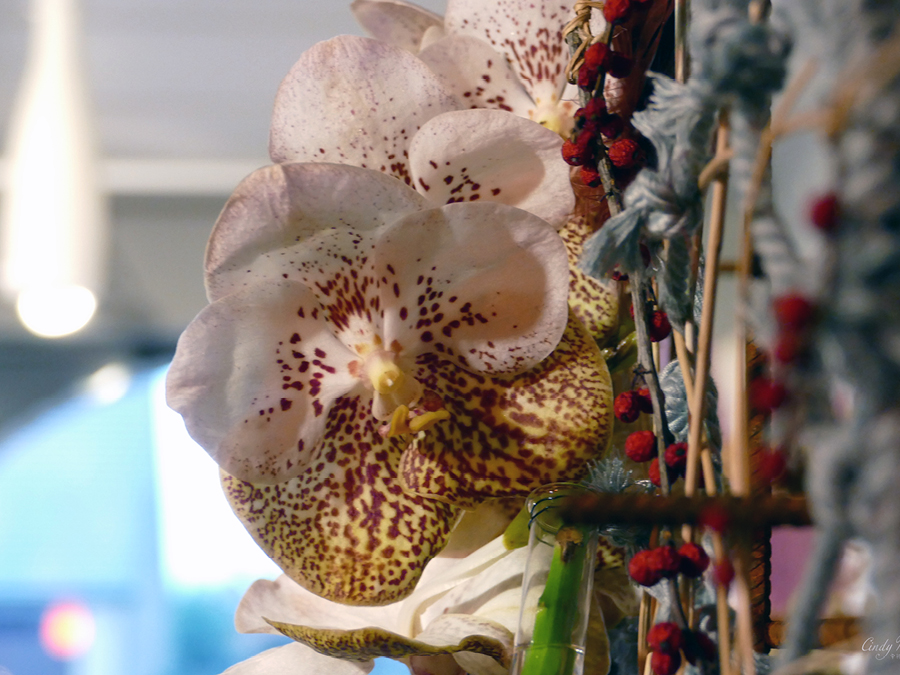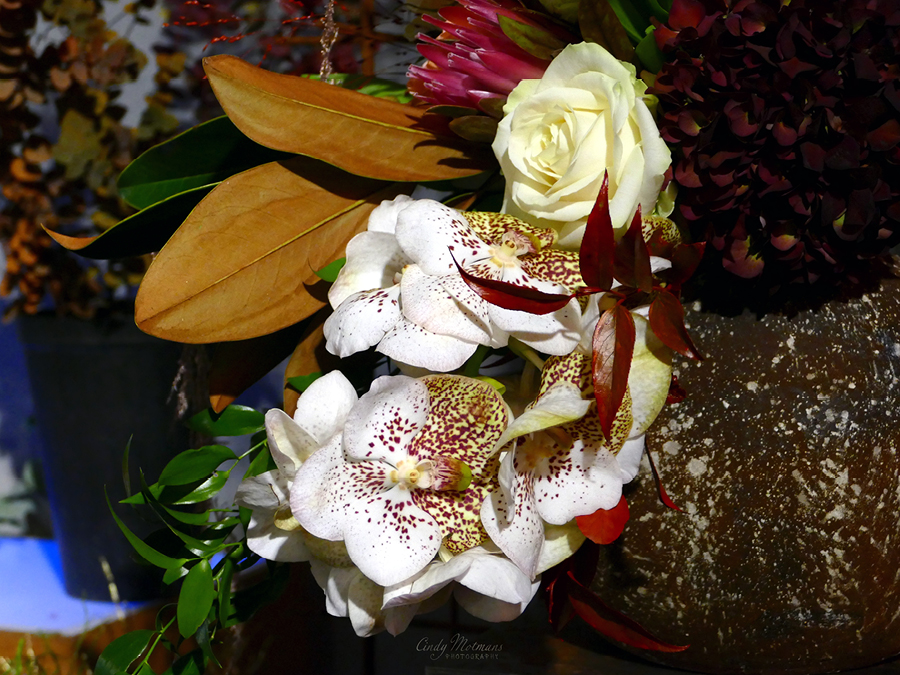This week at FloraPodium
Vanda 'Yellow Spots'
Calendar
The Vanda 'Yellow Spots' is available all year.
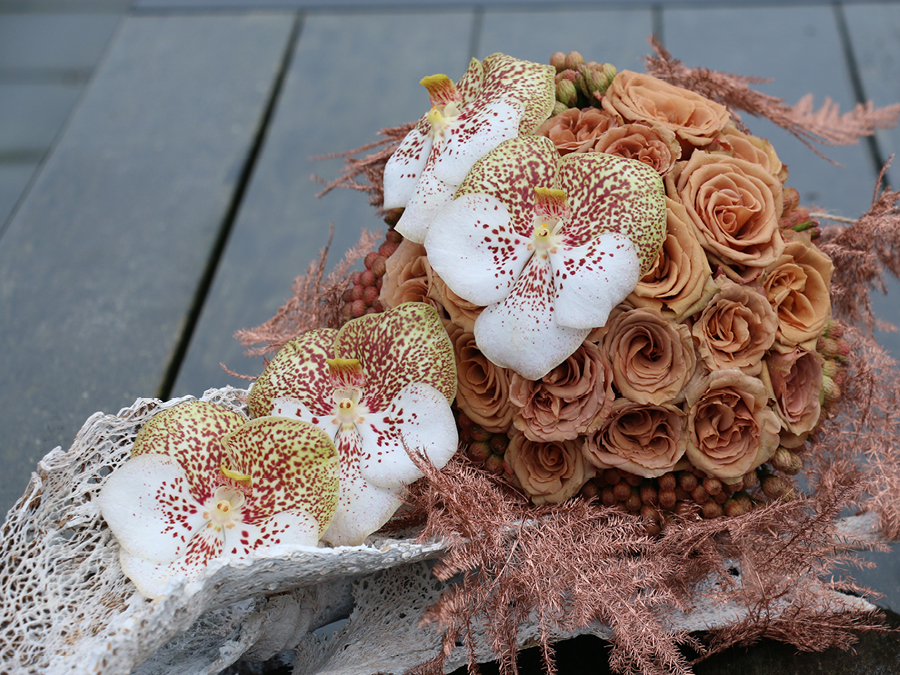
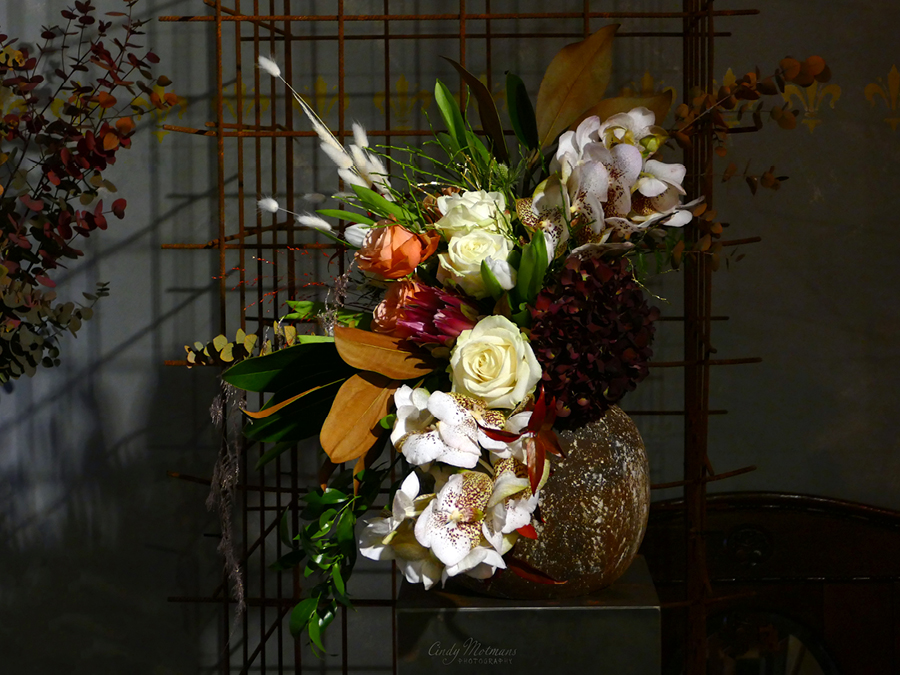
In the spotlights
Growing high in the trees of the jungle, you need all the help you can get to get noticed. Because Vandas are Epiphytes, they grow almost invisibly high in the tree, but because of its special colors it still manages to attract insects that are necessary for pollination. We visited Ansu Vanda, where Sven de Brabander (sales representative at Ansu Vanda) told us more about this exotic appearance.
Origin
The Vandas originate from the rough southern flanks of the Himalayas, from India to South China. There the Vanda grows high in the trees, with aerial roots that attach to the trees. The plant lives from morning dew and raindrops. To attract insects in an inhospitable place like these, the Vanda has to stand out and it does so because of its colors. They are unprecedentedly varied, in every possible shade. This beautiful flower even appears in blue, a color that nature barely knows.
Queen of the jungle not commercial
For a long time the Vanda was an orchid that could not be grown into a flowering plant and was therefore not commercially interesting. It is thanks to Tamlong Suphachadiwong that the Vanda has become the world's most appealing orchid. In Thailand, Tamlong Suphachadiwong is known as the man with an unbelievably large plant collection, gathered in the company he founded with his wife Heike: Suphachadiwong Orchids. With his passion, knowledge and craftsmanship in breeding, Tamlong created a commercially interesting Vanda assortment. A range that is still growing. The Vanda thus became the symbol of exclusivity in floriculture.
Exclusive floriculture product
Vanda "Yellow spots" is a great exclusive type of Vanda. Ansu has had this product in its range for a year or two. It is a variety that is very popular due to its unique appearance and limited availability. It is a beautiful two-colored flower and the yellow dots look like gold compared to the white color of the petals. With its large flowers and long branches it’s one of the special eye-catchers in the range.

The cultivation
The company currently has 5.6 hectares at its disposal. But another 3.5 hectares will soon be added as a result of a merger. At present, 85% of the turnover consists of the sale of cut flowers, the rest is the sale of plants. Steef van Adrichem and Ed Helderman are the owners of the company.
From Anco to Ansu
Anco is a very famous name in the floriculture sector. The company name has been changed from Anco Vanda to Ansu Vanda. "Su" stands for the Vanda breeder with which Anco cooperates: Suphachadiwong. "An" stands for the old Anco. In addition to breeding, the Suphachadiwong company is also responsible for the plant material. 5000 new plants come from Thailand every month. In one box there are about 50 new Vanda plants that arrive packed tightly together. When the plant enters the company, the plants have already been growing in Thailand for a number of years.
New variety
Each new variety is tested 3 times. If the product meets the expectations as a cut flower, it is taken into production.
The company currently grows around 100 different varieties of Vandas. New varieties are still being added, as a cut flower and as a plant. They want to reduce this to around 30 varieties. Many varietes are very similar, so by reducing the number of different varieties, they hope to be able to provide larger numbers for customers with larger orders. Another consideration is that the small crops with fewer stems also provide a larger risk.
New concepts
Ansu Vanda also delivers beautiful Vandas in vases. The aerial roots are clearly visible. The combination offers a very special effect. The best way to care for these Vandas is to place them with their roots in a wash basin with lukewarm water twice a week. Let the roots absorb water and then put them back in the vase. Don't let the Vandas stand in the water, they don't like that.
The new concepts also include the Tillandsia concept that Ansu launched in April 2019. Two unique Tillandsia varieties are offered in different concepts. Ansu will also be launching new Sansevieria concepts from February 2020. Unique and existing types of Sansevieria will be marketed in ceramics. The appearance is very classic and stylish. A real must-have in an interior!
Cultivation story
In the nursery both young and old plants are hanging from the ceiling. The oldest plants are around 20 years old. If a plant is too old, the quality of the flowers will decrease which may lead to the decision to discard these plants. A plant produces an average of 2 to 3 branches per year; this is different per species. Where many flower varieties can be managed by changing the climate, this is very difficult for Vandas. Small adjustments can be made, but there is no way to be sure of the result. It is therefore difficult to predict the number of branches. This offers a unique challenge in production planning where long term orders are concerned.
Manual work
With a company of 5.6 hectares, you would expect that most of the cultivation is automated. However, contrary to expectations, all the work in the company is still done by hand. All cut flowers are tied and cut by hand. It is a very sensitive product that is difficult to automate. All plants hang on a hook in the air. Because the plant is an epiphyte and gets its water from dew from the air, only the roots of the plant need to be sprayed with water.
FloraPodium, 16 January 2020
